| This is the huge Palacio de Gobierno with one side
facing onto the Plaza Major. It is a huge square building with an interior
courtyard and contains government and legislative offices. It also houses
the tourist office. | 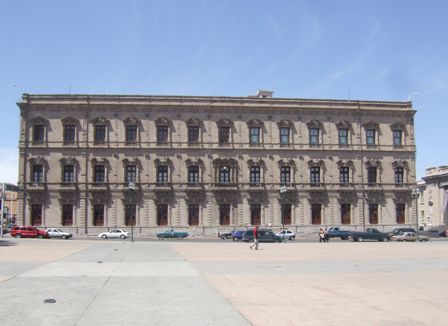 |
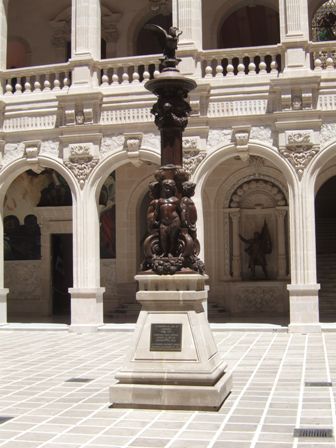 |
This is a very important building since it is where Miguel Hidalgo was shot.
An eternal flame burns in a niche just behind this central statue. |
| The walls all around the ground floor are painted with
murals by Aaron Pina Mora and depict the history of the state of Chihuahua
from the Spanish conquest to the Reform era. | 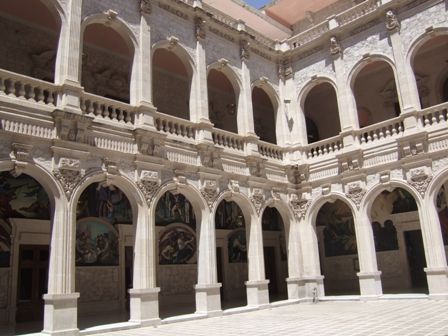 |
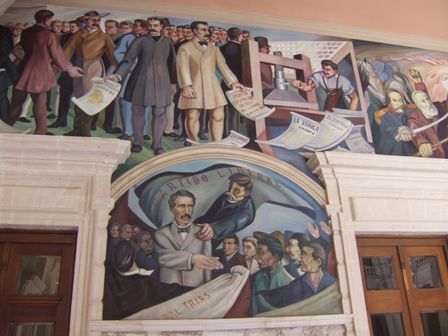 |
The murals are quite detailed and I'm sure if you knew Mexican history you
would be able to put names to most of the faces. |
| Halfway up the stairs are a couple of stained glass
panels which are quite attractive and somewhat unexpected. | 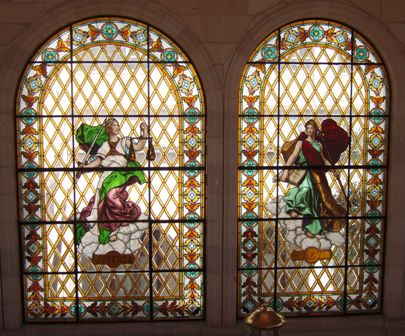 |
 |
This is Francisco (Pancho) Villa, another of the most famous people in
Mexico's history. He was murdered in 1923. |
| This is old parliament room of the state Congress,
used until 2003. The new one is just across the road (in the poetry
building). | 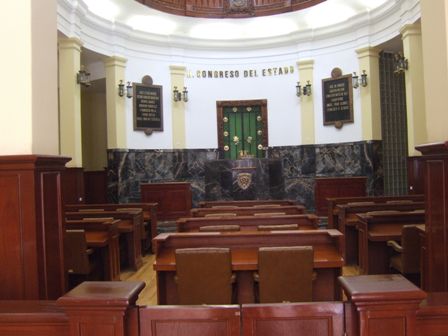 |
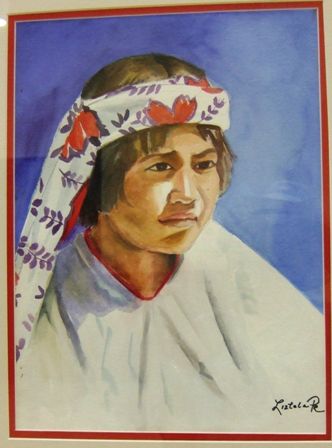 |
One of the rooms had an art exhibition most of which left me cold but there
were a couple of portraits of indigenous Huichol children. |
| The Teatro de la Ciudad (City Theatre). The original
Teatro Betancourt was built on this site in 1877, after a fire a second
theatre was inaugurated in 1910 as the Teatro Centennial, and it became the
Colonial Cinema in 1945 following yet another fire in 1938. It closed in
1992 but was refurbished by the city in 2002 and resumed the original
function of a theatre. | 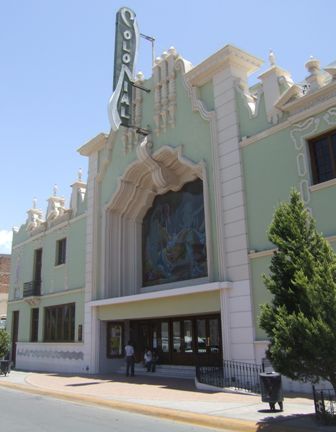 |
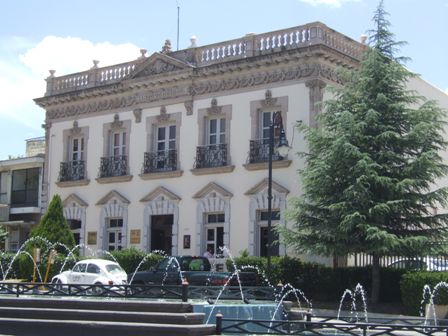 |
We wanted to walk some way out of the city centre towards the aqueduct and
in doing so passed many fine buildings. |
| This statue of a Lebanese worker celebrates the
contribution made to the economic success of the city by the significant
number of immigrants who came and settled mostly in this area. They worked
very hard, set up businesses, and integrated quickly. | 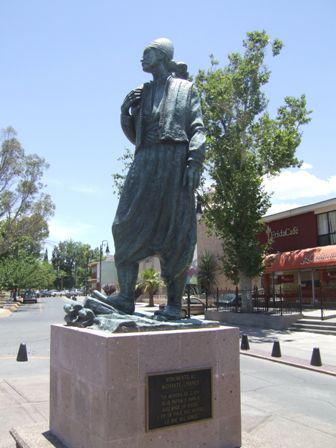 |
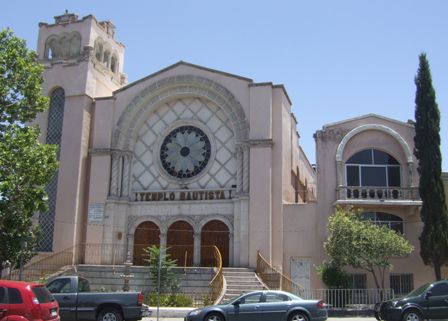 |
So many of the churches we have seen have been Catholic, it comes as a
surprise to find one from another denomination. This is a Baptist church and
a reminder that this is one of the fastest growing groups in the southern US
and is obviously spreading over the border. |
| One of the most beautiful neoclassical buildings in
the city, the Quinta Gameros was built between 1907 and 1910 by the Gameros
family. When the Mexican revolution broke out the family fled the country,
and it was then used for various purposes including barracks and offices for
Pancho Villa. It now belongs to the university of Chihuahua and serves as a
museum for part of the Requena collection of art nouveau furniture. | 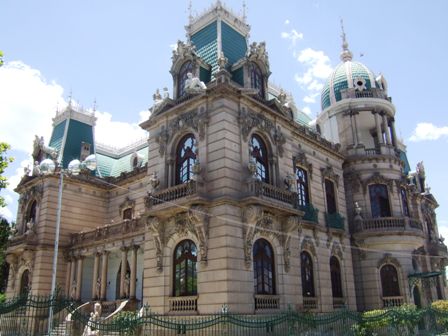 |
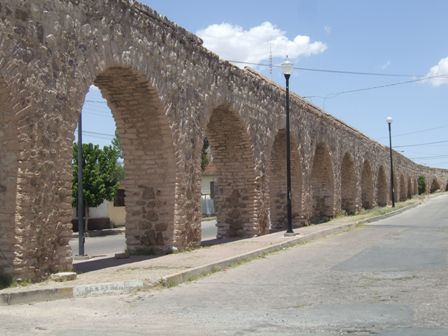 |
We eventually found the aqueduct, still in reasonably good shape but without
the informative plaque in Spanish and English which we find at most
important sites. It was built between 1751 and 1793. At that time it was the
solution to supplying water to the growing city. It also fed the many
fountains and helped to beautify the city. The highest arches are 24m high
and it was over 5km long. Today only a small section has been preserved. |
| Walking back we passed the Plaza de Toros showing that
bullfighting is still alive in Mexico today. We also saw a bullfight on
television. | 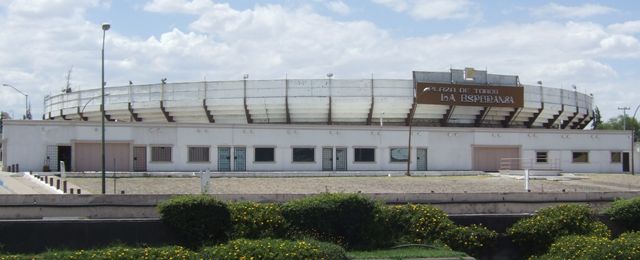 |
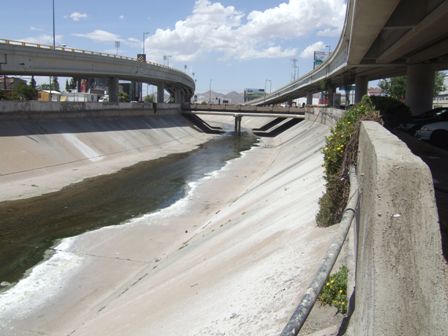 |
A canal splits the city which from its design appears to be a stormwater
drain. These are common in parts of the world where it rains rarely but very
heavily. The rainy season here is July and August. |
| Not a figure from a revolution for a change, but fame
of a completely different kind. This is another of Mexico's famous sons,
born in Chihuahua in 1915, Anthony Quinn Oaxaca. Here he is portrayed in one
of his most famous roles, 'Zorba the Greek'. | 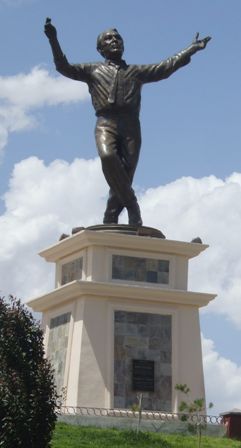 |
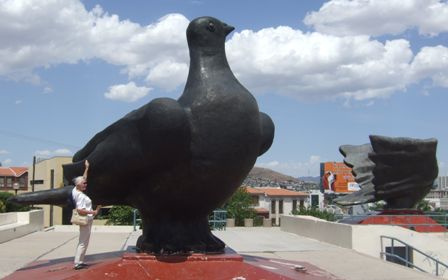 |
Most cities regard pigeons as a pest and one this size certainly would be. |
|